11-minute read
In this article:
- Learn what defines confined spaces and the conventional inspection methods they require.
- Learn how using remote technology compares to traditional methods of confined space inspections.
- Learn the best types of technology to use, the benefits, and the fastest way to implement them.
As technology continues to advance, innovative inspection companies are exploring new ways to conduct inspections in order to keep workers safe. One area where technology is making a significant impact is in inspections of confined space, where the use of robotics and drones is becoming increasingly common.
Let’s jump into the topic and take a closer look at where technology comes into play, but first we’ll review the basics.
What is a Confined Space?
A confined space is a relatively small and enclosed area that has limited or restricted means of entry or exit. These spaces are not designed for continuous occupancy, and they may pose several safety concerns to workers who enter them.
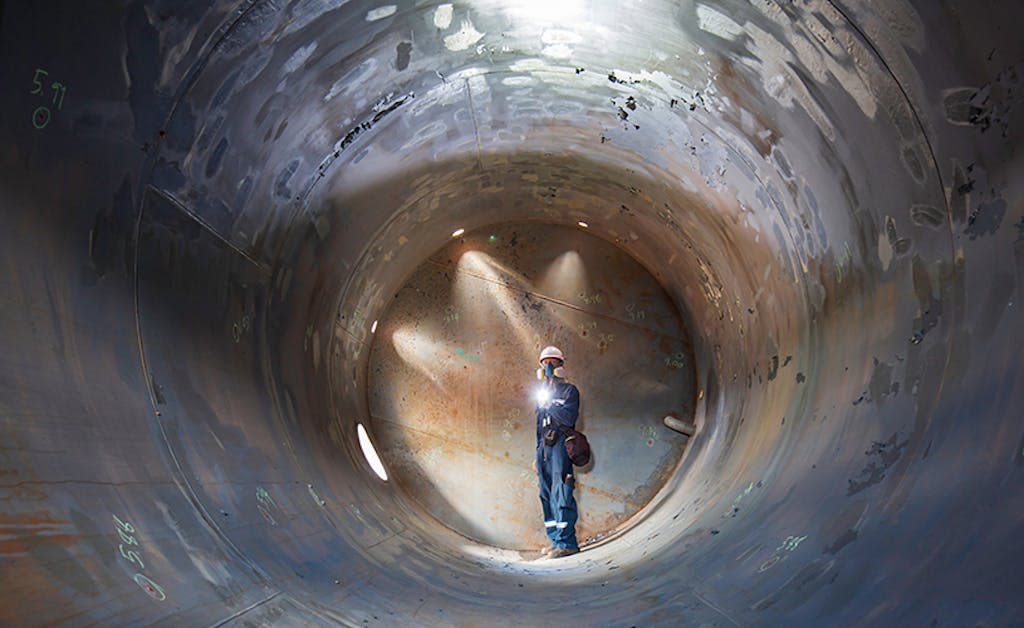
Get In Touch
Reach out to our inspection team to learn more about how we can help maintain your critical infrastructure…
Confined spaces can be found in a variety of settings, including industrial facilities, construction sites, and public works projects. Some common examples of confined spaces include tanks, vessels, silos, sewers, and tunnels.
How Remote Technology Compares to Traditional Methods
Traditionally, confined space inspections require human inspectors to physically enter the space to assess potential hazards and collect data. However, this can be a dangerous task due to the range of safety concerns they pose, such as low oxygen levels, hazardous chemicals, contributors to heat stress, and other dangerous conditions.
Proper safety measures and inspections are necessary to ensure worker safety in confined spaces. By using drones and other remote technologies, inspection companies reduce the need for human entry, improving safety and efficiency.
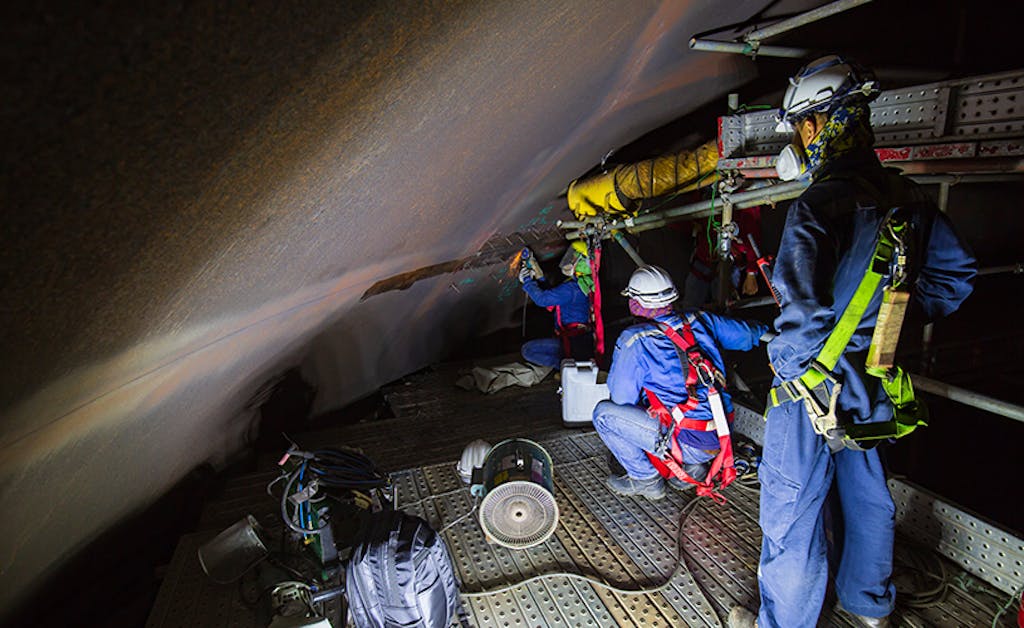
Robotic inspection technology allows for remote control of a machine that can enter the confined space and perform inspections of key areas. By integrating sensors and cameras, these machines gather essential data, enabling facility managers to conduct inspections without human entry. This innovative technology significantly minimizes the risk of accidents and injuries.
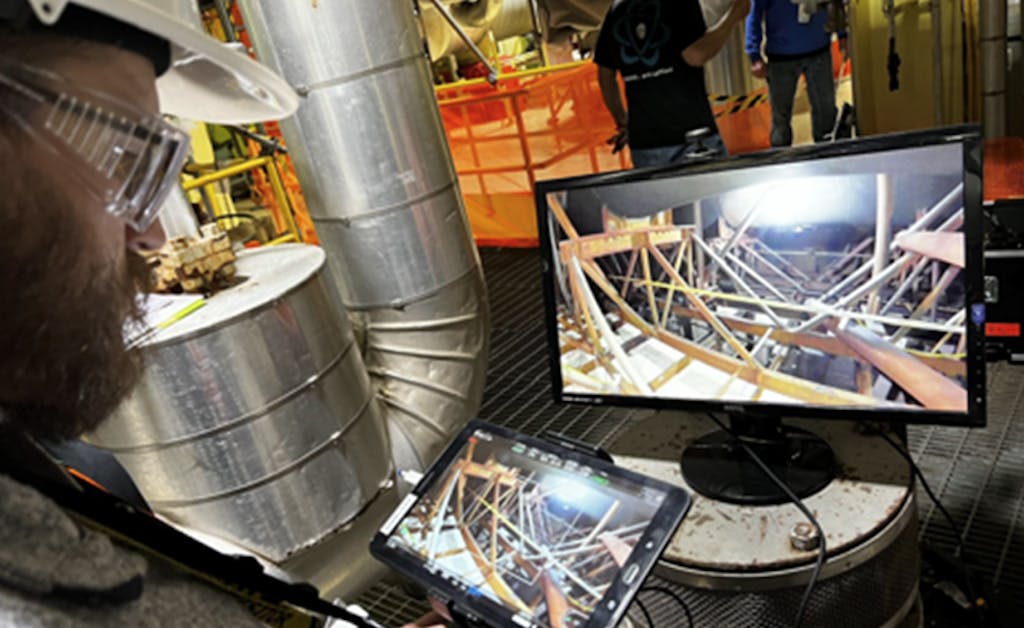
Related: Upgrade ROV Inspections for Power Plants with Submersible & Crawler Capabilities
Drones, or Unmanned Aerial Systems (UAS), are a specific type of remote technology that can be used to inspect confined spaces. By using drones, inspectors can access areas that would otherwise be difficult or impossible to reach, such as the tops of tall storage tanks or inside narrow pipeline corridors.
Drones are equipped with cameras and sensors, which help provide a detailed view of the confined space without putting human workers in harm’s way.
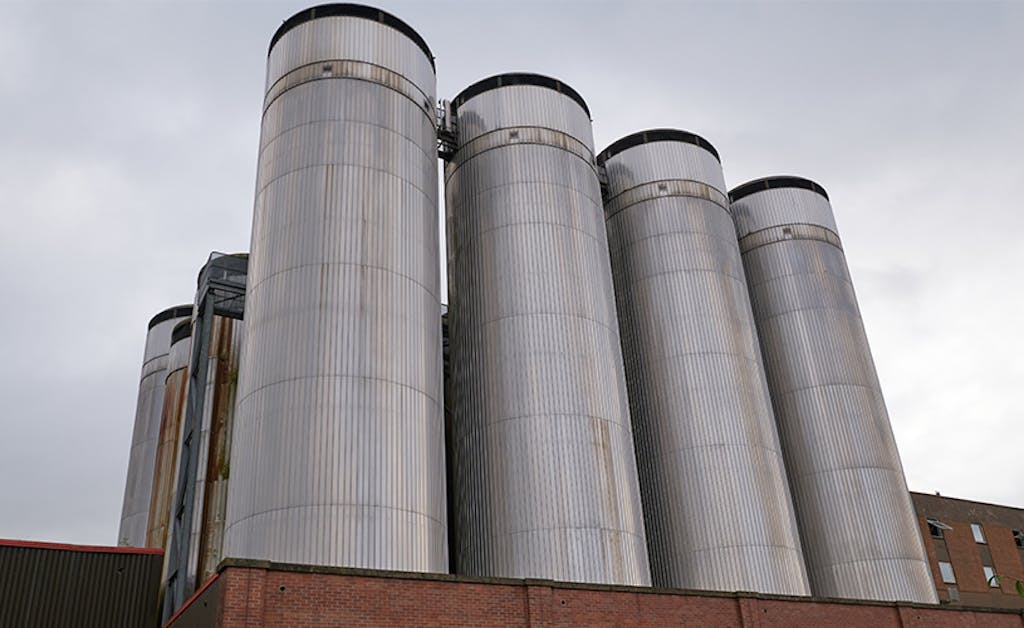
If you’re looking to implement advanced inspection technologies, consider collaborating with a professional inspection company like Constellation Clearsight.
Our turnkey inspection services team is comprised of engineers, operators, and a technical solutions team, which manage our customer services portal.
The Constellation Clearsight portal helps our experts analyze data, and enables our customers to login and view reports and raw data, which can be seamlessly integrated into their asset management system. With our services, you can start reaping the benefits of technology today!
Remote Technology Used in Confined Space Inspections
When it comes to performing inspections in confined spaces, there are several technologies that can be used, depending on the specific requirements and objectives of the inspection.
- Collision-Tolerant Drones: Indoor drones are compact and have on-board lighting, making them ideal for navigating and performing inspections in tight indoor spaces. They are typically equipped with cameras that can capture high-resolution images and video as well as thermal video, providing detailed insights into the condition of indoor spaces.
- Payload-Supporting Drones: Certain drones require more powerful propulsion and larger airframes, in order to support more advanced sensors and cameras, and can sustain longer flight times. These drones are typically used when more detailed inspections are required in larger confined spaces and outdoor areas. They may also be equipped with specialized payloads such as VERY high-resolution cameras, gas detectors, dosimetry instrumentation, and LIDAR equipment, as well as ultrasonic thickness and other thickness measurement sensors.
- Robotic Crawlers: In addition to drones, robotic crawlers can also be used for confined space inspections. These devices are designed to move along surfaces and through narrow spaces, providing detailed images and data on the condition of confined spaces.
- Remotely Operated Underwater Vehicles (ROVs): ROVs can navigate through underwater environments where, typically, human divers are required for inspections. Oftentimes, these areas are confined spaces, where there may be overhead obstructions that impede direct vertical access to the water’s surface. ROVs enable safe and efficient inspections of these environments and provide some other capabilities, such as foreign object retrieval, sonar surveys, remote ultrasonic thickness measurement examinations, and sediment mapping, sampling, and cleaning.
Overall, the type of drone used for confined space inspections will depend on the specific requirements of the inspection, such as the size and shape of the space, the type of data required, and any potential hazards that may be present. By utilizing the right type of drone for the job, inspection companies can ensure that the inspections are conducted safely, efficiently, and effectively.
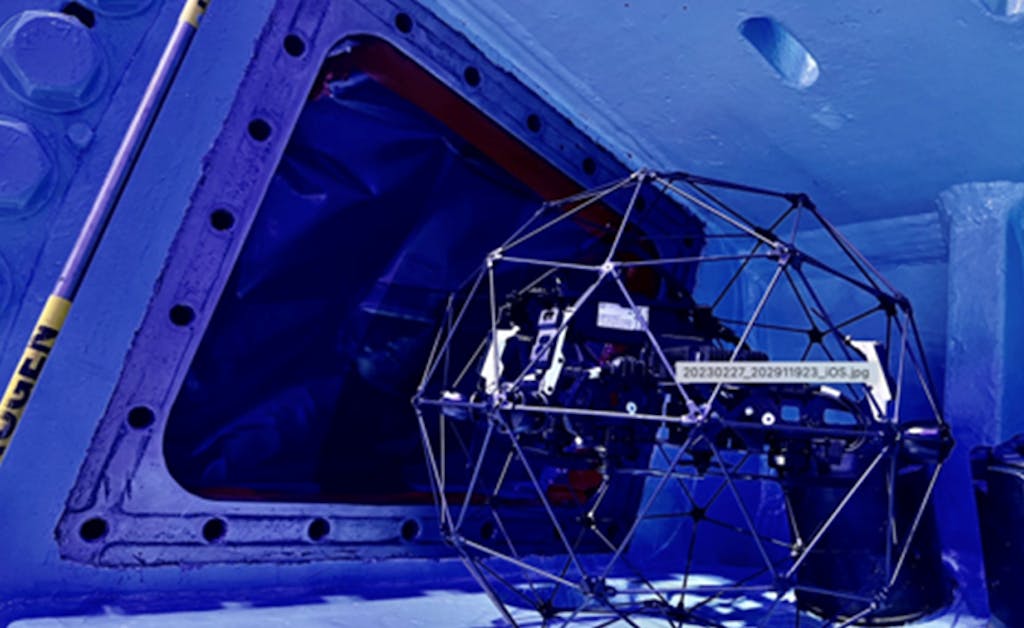
With various types of equipment available for these inspections, it is important for inspection companies to use commercial-grade remote tools which have been vetted for the specific application at hand.
A failure to do so can result in problems for the asset being inspected, the equipment being used, and certainly the reputation of the inspection program.
Benefits of Drones and Robotics
The use of robotics and drones for confined space inspections has several benefits.
- Improved Safety: Confined spaces come with inherent safety risks. By using drones and robots, inspections can be conducted without “breaking the plane,” eliminating the need for a human to enter the manway. This reduces exposing personnel to risk of accident and injury, making inspections safer and more efficient.
- Increased Efficiency: Drones and robots can access hard-to-reach areas without the need for lifts, scaffolding, or cranes, providing faster and more comprehensive inspections.
- Enhanced Data Collection: Drones and robots collect high-quality images and data that provide detailed insights into the condition of confined spaces. This data can then be used to identify potential hazards and inform maintenance activities, ultimately reducing the likelihood of future incidents. In addition, these technologies provide specific geolocational data, which allows for the exact location of any area of interest to be recorded.
- Cost-Effective: Drones and robots provide a cost-effective alternative to traditional inspection methods. By reducing the need for human inspectors and the use of scaffolding or lifts, drones and robots can help companies save time and money. This is especially true within power generation facilities where many confined spaces require down-powering to allow for safe human entry.
- Improved Accuracy: Drones and robots provide more accurate and reliable data than most traditional inspection methods. This is because they can access hard-to-reach areas and collect data from perspectives, providing insightful views of areas within a confined space.
Innovative inspection companies like Constellation Clearsight are at the forefront of using technology to improve safety and efficiency in confined space inspections. By exploring the use of robotics and drones, companies can ensure that workers are kept safe while collecting meaningful and actionable data to help identify conditions averse to system reliability, and hazards that can compromise safety.
Bottom Line
The use of robotics and drones for confined space inspections is an effective way to improve efficiency and leverage the use of technology to keep humans safe. As technology continues to advance, it is incumbent on forward-thinkers to adopt new tools into maintenance practices, to help improve the way workers interact with industrial settings.
Constellation Clearsight specializes in conducting inspections of industrial facilities across a range of settings. Whether the inspections are planned or required on an emergent basis, we offer professional inspection services that enhance safety and reliability at your facility.
Contact an expert today about your next inspection.
Related: Upgrade ROV Inspections for Power Plants with Submersible & Crawler Capabilities
Related Content

4 Practices for Preventing Utility Equipment Failures
Practices to prevent utility equipment failures. Asset inventory, inspections, data-driven decisions, industry collaboration – find tips on management plans here.

Improve Workplace Safety: Harness the Power of Digital Inspections
We’re transforming worker safety in the electric industry through innovative digital inspection technology. Learn the impact, benefits, and advancements we provide.

